April 2024
Fig.1
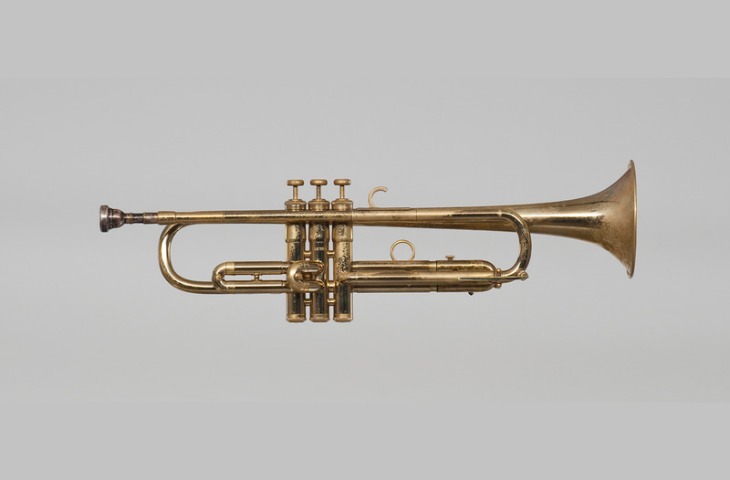
B-flat trumpet (right side), Martin Band Instrument Co., Committee model, Elkhart, 1956, inv. 2017.0005
Fig.2
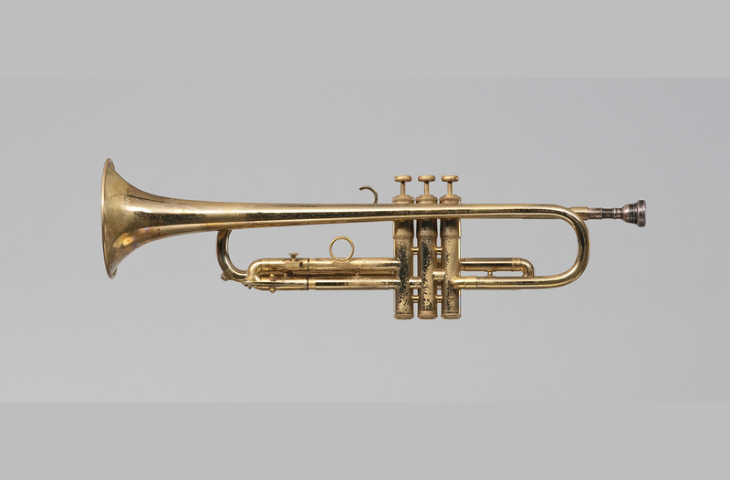
B-flat trumpet (left side), Martin Band Instrument Co., Committee model, Elkhart, 1956, inv. 2017.0005
Fig.3
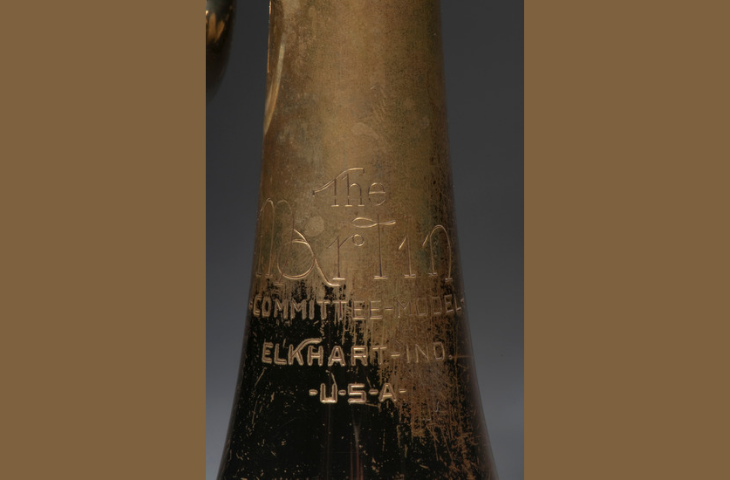
Detail of the mark on the bell
Fig.4
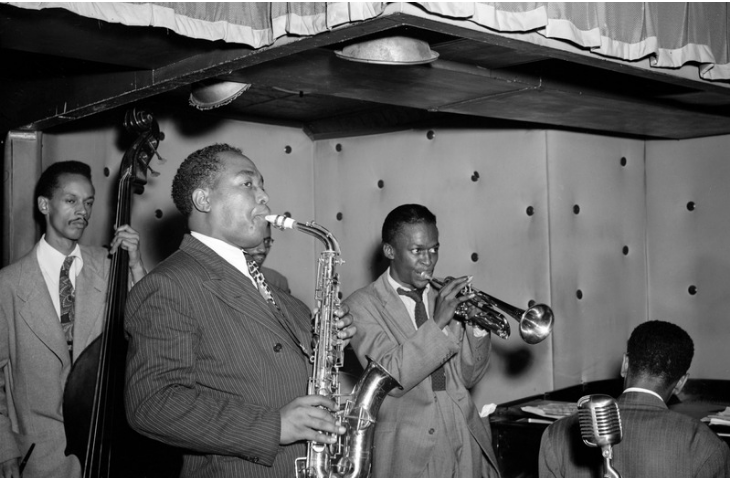
Miles Davis alongside Tommy Potter, Charlie Parker, Max Roach (partially hidden behind Parker) and Duke Jordan (from left to right), at Three Deuces, New York, 1947, William P. Gottlieb (through Wikimedia Commons)
Fig.5
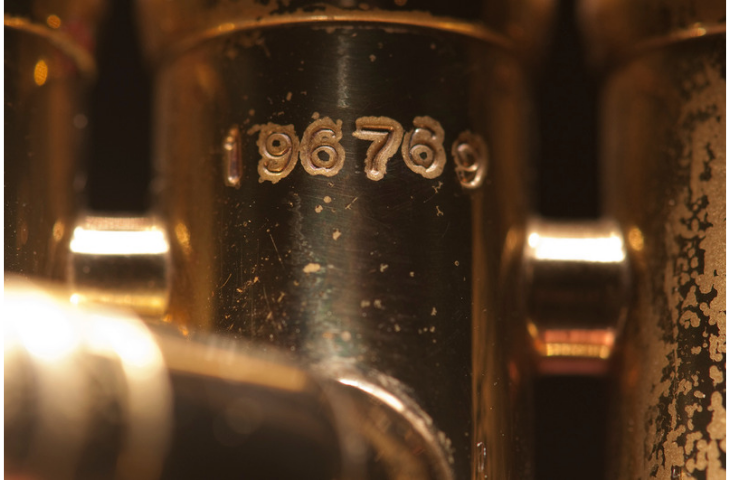
Detail of the serial number on the second valve
Fig.6
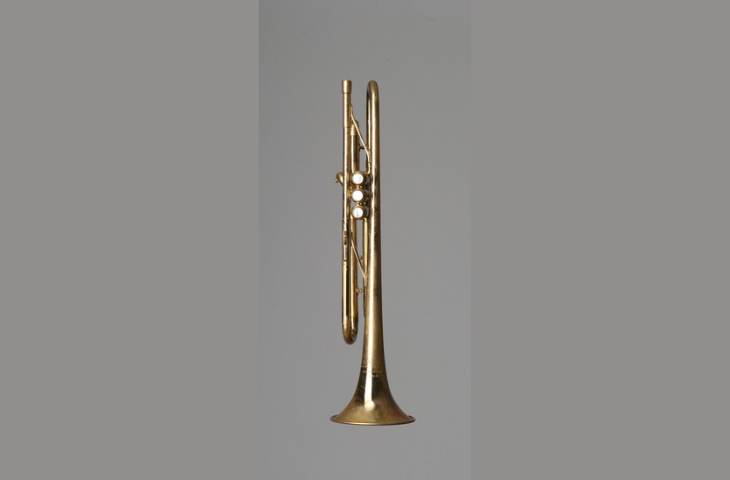
View from the top (mother-of-pearl finger buttons and oblique braces)
Fig.7
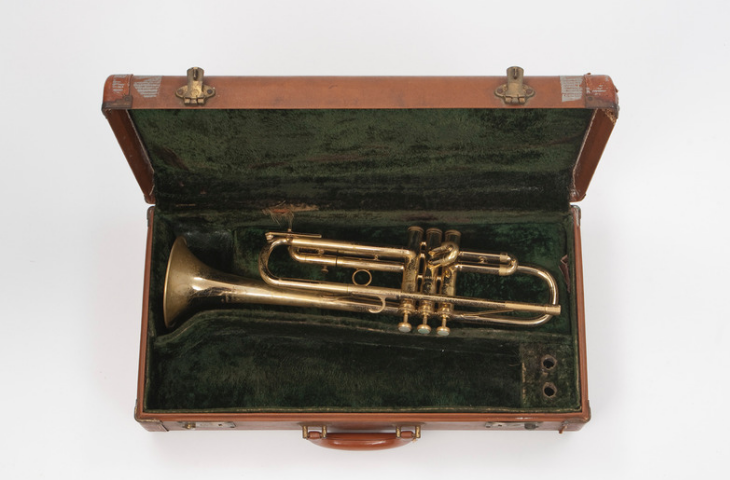
The trumpet in its case
Fig.8
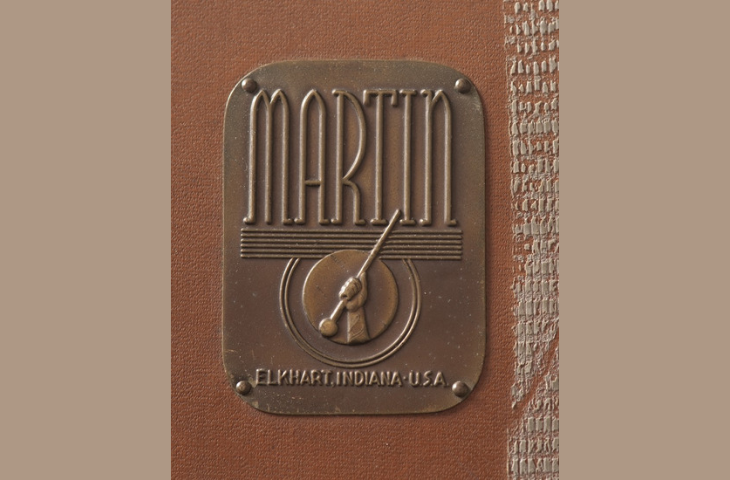
Detail of the mark on the case
The Martin Committee trumpet: an icon in jazz
Some musical instruments have acquired iconic status over the course of their history, whether in jazz, rock or classical music. These include, but are not limited to, the Fender Stratocaster electric guitar, the Selmer Mark VI saxophone, the Rhodes electric keyboard, the Moog synthesiser, the Hammond organ, the Gretsch drum kit, not forgetting the Steinway pianos and the legendary Stradivari violins. The trumpet, one of the emblematic instruments of jazz, also has its legendary name. Connoisseurs may point to Louis Armstrong’s Selmer Balanced or Maynard Ferguson’s Conn Connstellation, but it has to be said that “the” trumpet of jazz is the Martin Committee (fig.1 & 2).
The origins of Martin
The Martin Band Instrument Company was founded in Elkhart, Indiana, in 1910, on the initiative of Charles Henry Martin (1866-1927). His father, Johann Heinrich, a.k.a. John Henry Martin (1835-1910), a German immigrant from Dresden, had moved to New York in the mid-nineteenth century with his brother to work in the brass wind instrument industry. After New York, John Henry worked in Chicago before moving to Elkhart in 1876, where he joined the Conn firm, one of the largest in the sector. It was not until after his death in 1910 that his four sons joined forces under the leadership of Charles Henry to form the Martin company. Over time, the firm underwent several mergers and acquisitions. It moved to Kenosha, Wisconsin, before ceasing operations in 2007. It was only very recently that the company tried to return to its family roots with a new site in Muskegon, Michigan.
The Committee model: the birth of a legend
The Committee model (fig.3) owes its name to the committee of specialists set up by the American firm in the mid-1930s to develop a new trumpet. The members of this committee would have tested the various prototypes of the instrument and given their feedback to a musician-craftsman in charge of development: Renold Schilke (1910-1982). Schilke had ties with Belgium, having studied at the Brussels Conservatoire in the late 1920s and taken a keen interest in the work of Victor-Charles Mahillon.
Principal trumpet of the Chicago Symphony Orchestra, Schilke went on to set up his own trumpet manufacturing company, which is still highly regarded among classical trumpet players today. The committee appointed by Martin included a dozen trumpet virtuosos and/or teachers, the best known of whom was the Mexican Rafael Méndez (1906-1981), the regular soloist for Metro-Goldwyn-Mayer in Hollywood and an international star. This committee was advertised in magazines such as DownBeat, but we don’t know how much reality and marketing really went into the story. When Schilke gave his version of events, he spoke of a “committee of one”, implying that he was alone at the helm!
A trumpet with a unique sound, beloved by jazz musicians
Be that as it may, the Martin Committee trumpet appealed to professional players, particularly jazzmen, who adopted it for its sound, often described as dark and smoked. It was marketed between 1940 and 2007, but the production period considered to be the best was between the 1940s and the early 1960s. Most of the jazz trumpeters of this period played it, at least for a time, from Dizzy Gillespie to Chet Baker, Lee Morgan, Clark Terry and Art Farmer, to name but a few.
Miles Davis (1926-1991) remained loyal to the Martin brand and the Committee model for virtually his entire career. He can be seen playing this model in 1947 at the Three Deuces jazz club in New York, as part of Charlie Parker’s quintet (fig.4). The trumpet Miles used on his legendary 1959 album Kind of Blue is also a Martin Committee, probably the one now on display at the University of North Carolina School of Music in Greensboro, as is the one heard in the soundtrack to Louis Malle’s film Ascenseur pour l’échafaud (1958).
Even after production of the Committee was suspended in the early 1970s, Miles had custom versions made for himself, such as the superb “Moon and Stars”, with its dark blue dress embellished with gold stars and crescent moons. This trumpet was sold by Christie’s auction house in New York in October 2019 for the modest sum of $275,000. It was acquired by the owner of a jazz club in Ann Arbor, Michigan. Built by craftsman Larry Ramirez on the basis of a standard Martin Committee T3460, the trumpet was modified in the early 1980s to Miles’ specifications. He also commissioned the Martin firm to make a red version with similar motifs and a black one, which accompanied him on his last journey and is buried with him in Woodlawn Cemetery in the Bronx.
An exceptional instrument at the MIM
In 2017, the MIM acquired a Committee model B-flat trumpet. According to its serial number 196769, it dates from 1956 (fig.5). It is fitted with the two water keys characteristic of the model, positioned longitudinally in relation to the slides and fitted with long levers. On the leadpipe we can see a stylish hook for the ring finger of the right hand. Two oblique, square-section braces connect the leadpipe to the bell, while the finger buttons are covered in mother-of-pearl (fig.6). The trumpet has clearly been played a lot, as the lacquer has disappeared from around 50% of its surface. The instrument came in its case, probably the original one, made of wood covered with light brown leather on the outside and green velvet fabric on the inside (fig.7 & 8).
Its last owner was the talented Belgian jazz trumpeter Jean-Paul Estiévenart. In a video recorded shortly after the MIM acquired the instrument, he offers us a few notes on his now ex-trumpet, with an authentic “Harmon” mute dear to Miles Davis, then without a mute. This short film can be seen as a prelude to the International Jazz Day on 30 April 2024. Established by UNESCO in 2011, this day is a call for peace and unity in the world through jazz.
Text: Géry Dumoulin